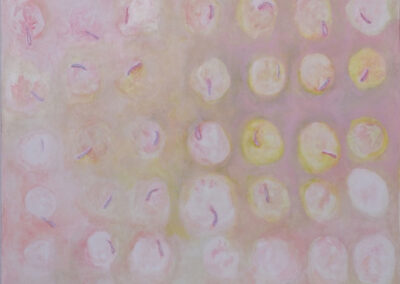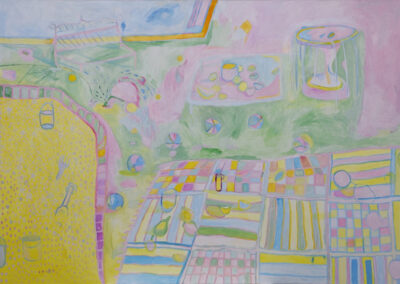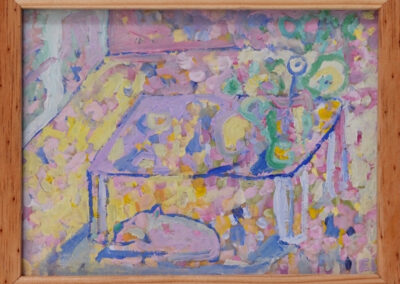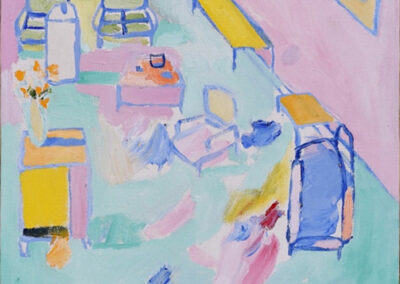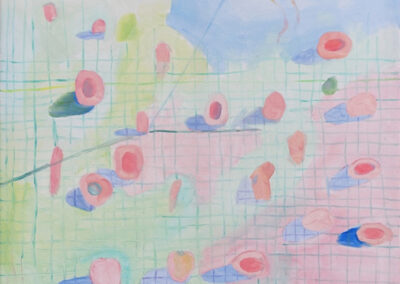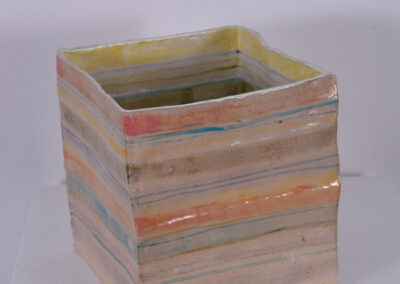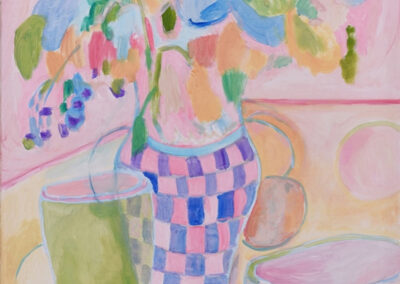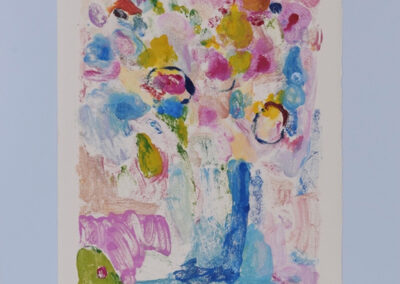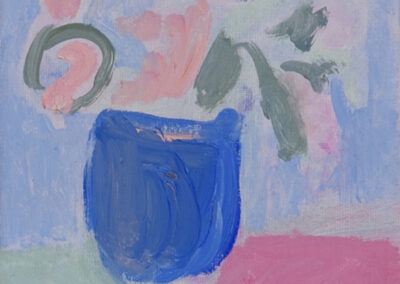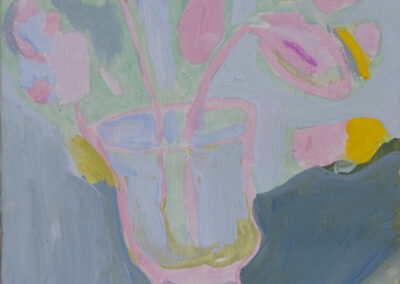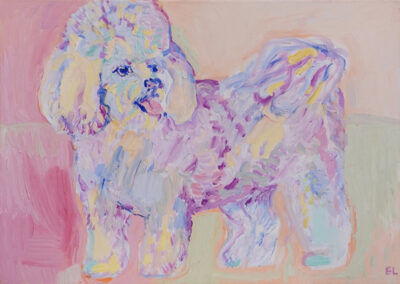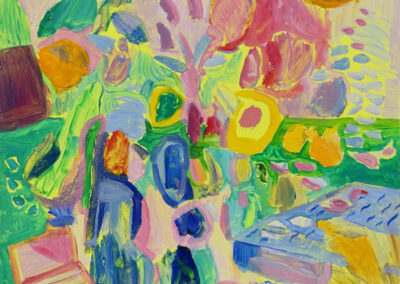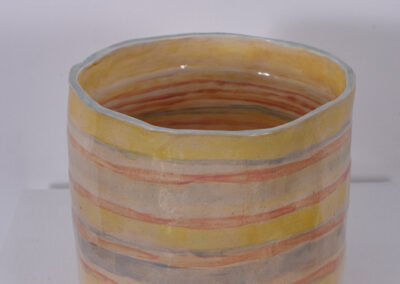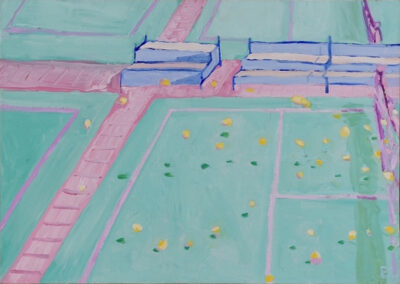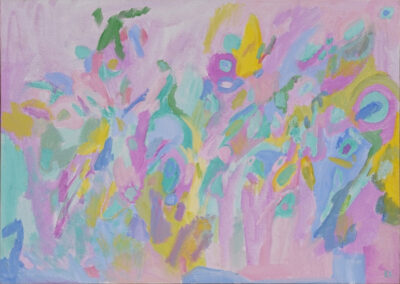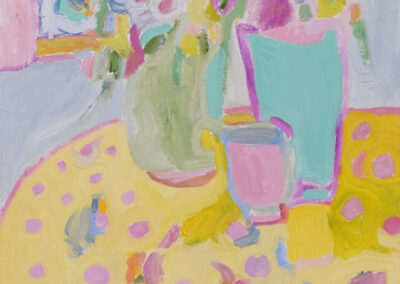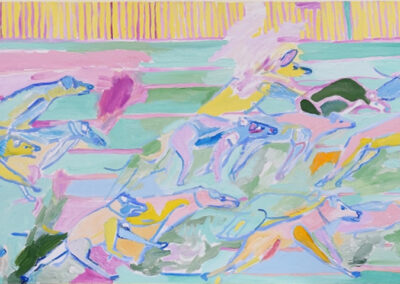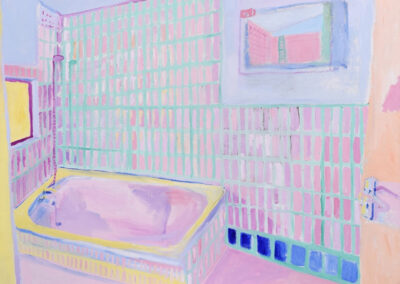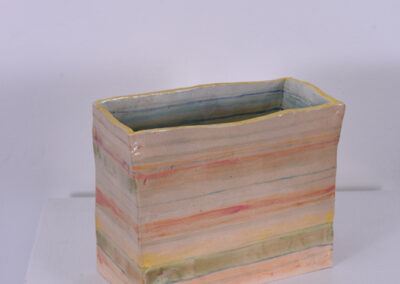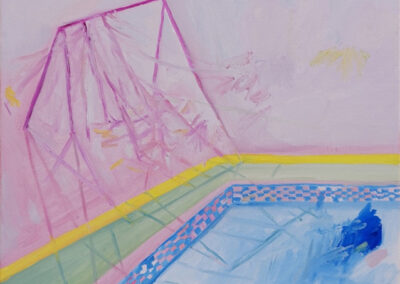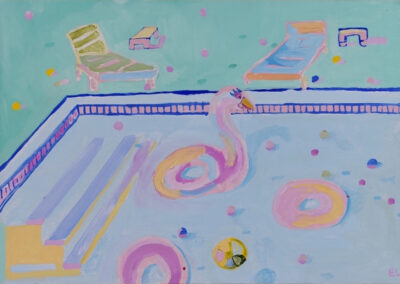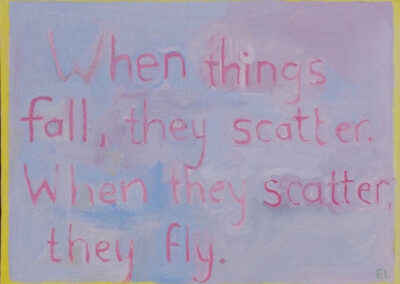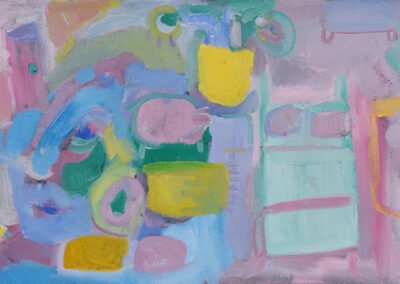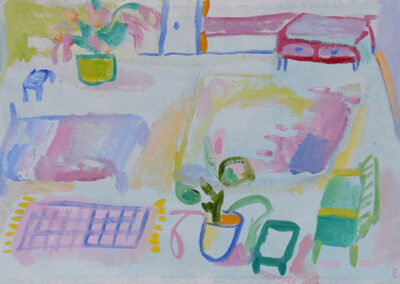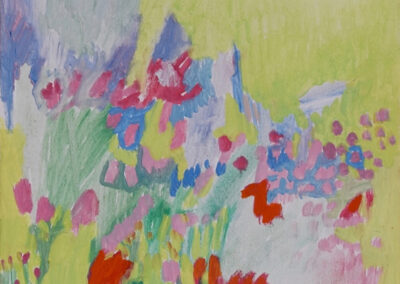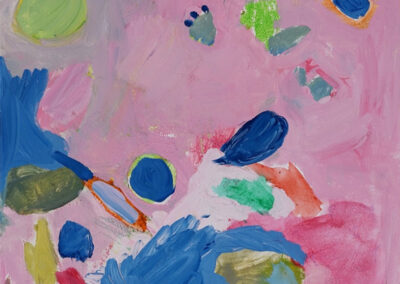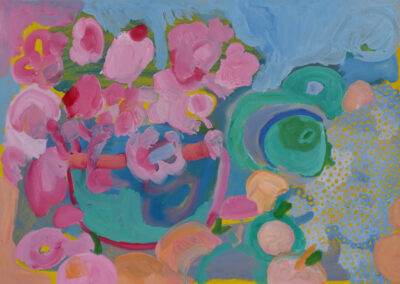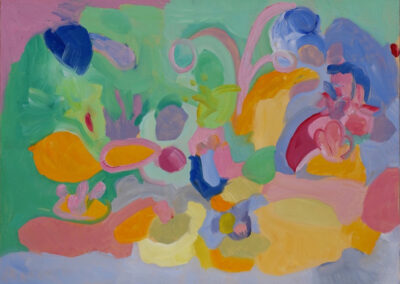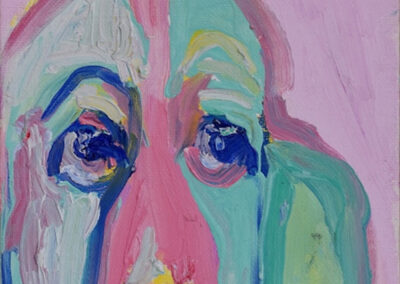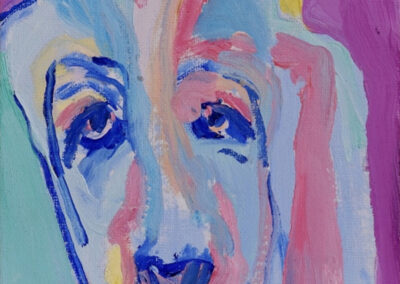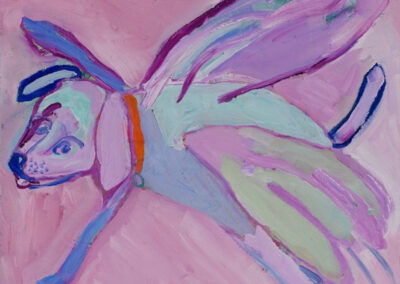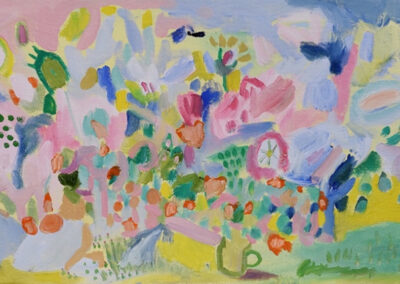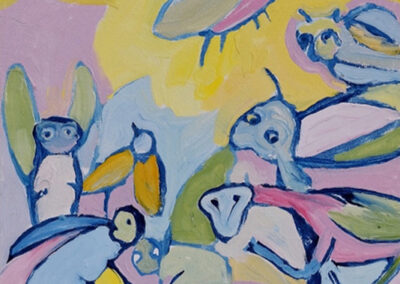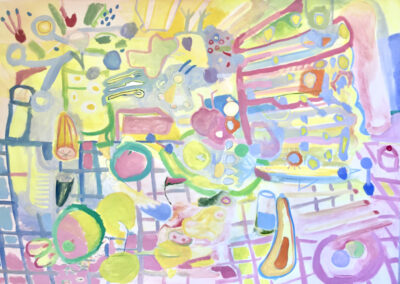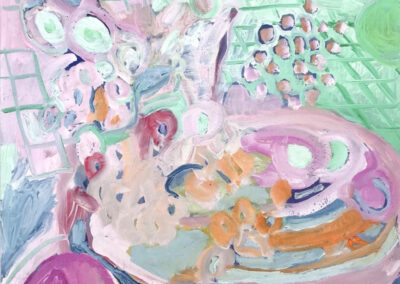
Emily Rae Smith Labuschagne
Emily Rae Smith Labuschagne works predominantly in oil painting using a pastel palette in order to portray the world around her. Her subject matter is often the quotidian and banal, manifesting in bright and vivid gestural brushstrokes, and creating something of the surreal and magical on canvas. The balance between the magical and the banal in Emily’s work is what makes it so engaging and alluring. Her keen technical painting skills coupled with a playful brush is evocative of hot summers and a sense of ennuie that accompanies too much playtime. The absence of humans in her work is a subconsious choice, but there is personification within her titles, often dark and humorous, in stark contrast with her colourful subject matter. Labuschagne has been exhibited at the DAOR Contemporary Art Gallery on the Winter 2021 Group Exhibition and held a solo exhibition at the gallery in 2022 titled Things Evaporate but Never Disappear.
Murder of the Housewife (Living Room with a set table, fresh flowers, and a rug under a couch), Oil on Board, 2021, 38 x 50 cm
One day, if I have a daughter, I will let her swing as high as she would like to (as my mother let me), Oil on Canvas, 2022, 50 x 40 cm
A study of Pink Ladies, Golden Deliciousness, and Granny Smiths with wilting flowers, Oil on Board, 2021, 36 x 50 cm
Two well-trained dogs waiting for their food (The unspoken complexities of training and the importance thereof), Oil on Canvas, 2022, 50 x 40 cm
Emily Rae Smith Labuschagne (b. 1994) is a multi-disciplinary artist and painter from Cape Town. She completed her Masters in Fine Art from Michaelis School of Fine Art at the University of Cape Town in 2020. Since then, she is a part time painting lecturer at UCT, founder of Aduc Art Education and private art educator. Labuschagne currently lives in Cape Town and works from her home studio. Her paintings are spontaneous and whimsical visualisations which largely manifests in forms of oil and water colour paintings.
Playing her pastel palette like the pied piper, Emily wanders into a world of nostalgia chasing the ephemeral sensations of childhood to wherever they lead. Dreamy recollections, that with every remembrance, have the potential to shape shift into the world of the reimagined, the reinvented.
An initial daubing of paint on the canvas, the blocking out of colours, set the scene for Emily to discover the details as she works, the images emerging like shapes taking form in the clouds. Deeply rooted within her work and intimated by her pastel tones (a reduction of saturated colour) lies the concept of echoes, of an impression left over from a moment in time, no longer in technicolour but indelible, nonetheless. And then come the words. The surface naiveté of her paintings: the playfulness of sprinklers in a garden on a summer’s day, a pastel inner tube floating in a pool, a pretty poodle, or a tumbling confectionery, hold beneath their innocent layer of frosting and delight, a deeper and sometimes darker sense of the world hinted at by the interplay of her images with their titles. With each word comes the whisper of a story: tales of whimsy touched with sorrow, of innocence giving way to experience, of life walking hand in hand with death. The melancholy of moments that are lost and the anticipation of moments yet to come.
The things that disappear that are never truly gone and the things that remain that were never truly here.
By Lindsay Klein

